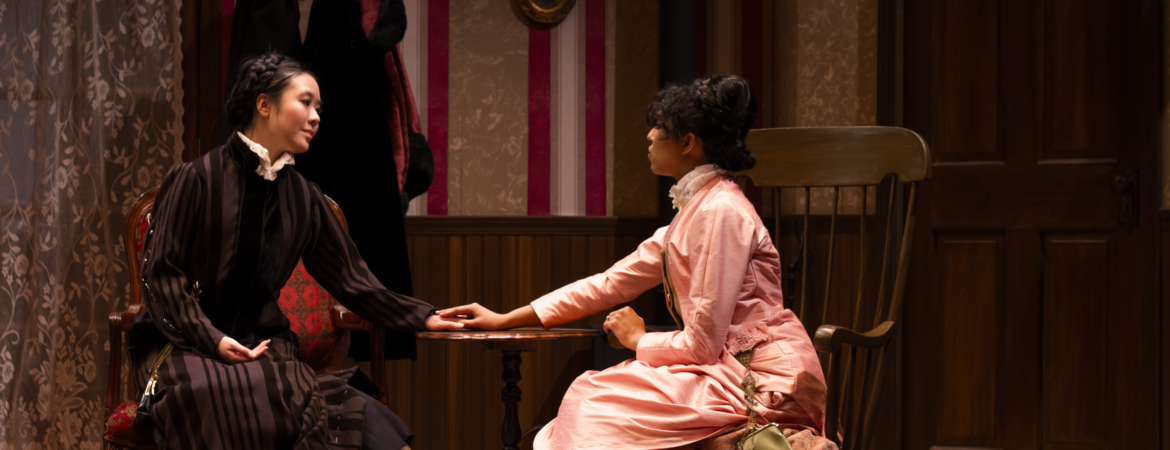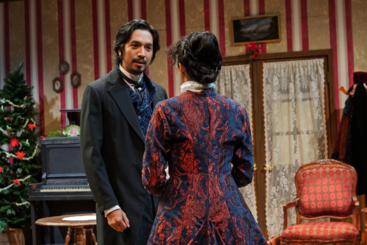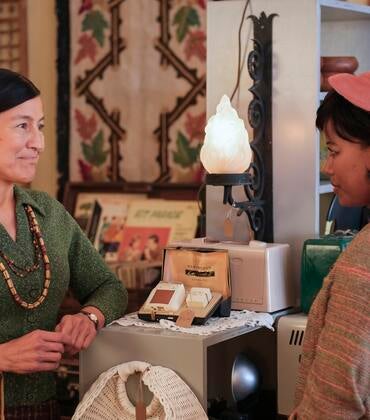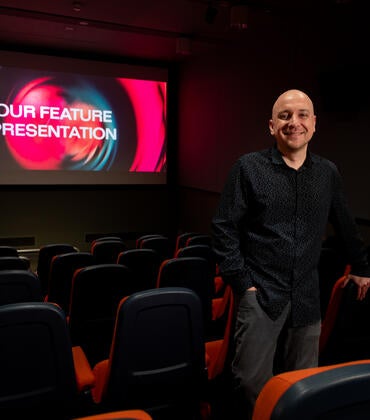
Thursday, May 8, at 8 p.m. is opening night for UC Riverside’s Department of Theatre, Film, and Digital Production’s interpretation of Henrik Ibsen’s “A Doll’s House.” It will be staged at the Arts Building, Studio Theatre (ARTS 113).
Set in a Norwegian town during the Victorian era, the play was first performed in Copenhagen in 1879, where it shocked and divided audiences. It challenged the gender roles and marital dynamics of the era and focused on a woman, Nora Helmer, in search of her identity in a male-dominated society as she struggles in her loveless marriage to Torvald. Conservative critics worried the play would give their wives the idea they deserved equality while others celebrated the play as a call for women to demand independence.
Melanie Queponds, a UCR alumna and lecturer, was asked to direct the UCR play.
“I think they were looking for a classic but with a new lens and a new vision,” Queponds said. “I started brainstorming what could it be and then finally settled on the same year, 1879, but in Sacramento, California, rather than Norway.”
Because of these contextual changes, Spanish is used in the dialogue. Nora Helmer becomes Nora Hernández and Torvald becomes Toño or Antonio depending on who is addressing him.
“I thought it important to keep the same syllables because sometimes you start messing around and it breaks the dialogue,” Queponds said. It was in conversations about changing dialogue that she realized not everyone could call Antonio ‘Toño’ because it is a family nickname. They worked out the small social details within a new Mexican American context.
Queponds said the play's adapters, Kirsten Brandt and Anne-Charlotte Hanes Harvey, were “supportive and generous” of her vision to bring Nora’s story home to early California.
Not only did the playwrights approve dialogue changes but also supported changing the famous Italian tarantella to a zapateado Jarocho, which is a Mexican folklórico dance from Veracruz, Queponds said.
“That's been really fun to transpose,” she said. “We literally had a composer transpose a traditional Son Jarocho song, typically played on guitars, other string instruments, and harps, into a piano piece so that they could play it on stage.”
In this production, the characters live in a liminal space where their ancestors lived in New Spain, then Mexico, and then the United States. The diverse cast plays repatriated Americans who decided to stay after Mexico lost control.
The audience will be engaged throughout. From lights up to lights down, the cast renders emotional changes and perspective shifts in facial expressions that reveal the subtext of the words they speak. At times wordless, the audience understands their contradictions and realizations. Sebastian Ocampo as Nora delivers a smile at the right moment that triggers both a sense of tragedy and triumph just as Alvin Peralta as Toño turns a befuddled look into one of deep understanding.
Queponds hopes the audience will be engaged by universality between cultures.
“I was telling my cast yesterday that I think we forget that Nora and Toño are real people. Our cultural values have been passed down from our great grandparents,” she said.
The resetting of the play from 1879 Norway to California creates a more expansive experience, she said.
“Because of this new concept, we've found so many layers that have continued to just unfold. It’s been fascinating just to explore, and I hope the audience continues to think about these issues after the performance.”
Header image by Aubrey Jerue.




